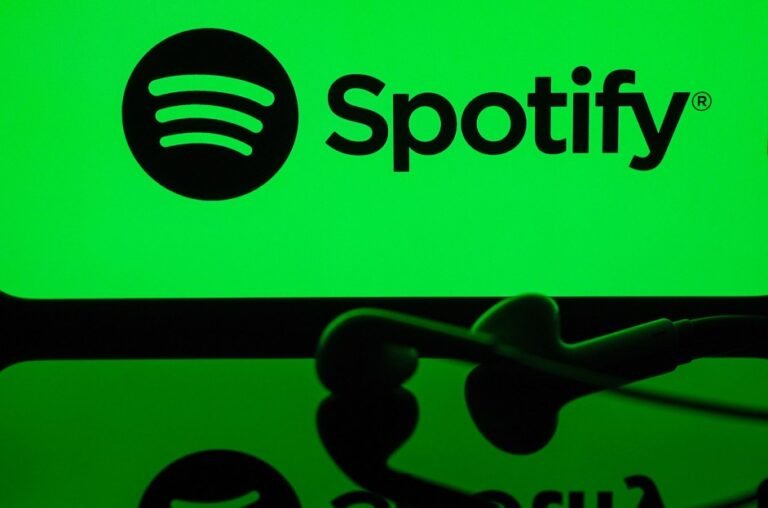Spotify Beats Revenue Expectations as Paid Subscribers Surge to 276 Million in Latest Quarter..see more…

Spotify, the world’s largest music streaming platform, has once again surpassed Wall Street’s expectations for quarterly revenue, fueled by a substantial rise in its premium subscriber base. The company announced on Tuesday that its paid subscribers rose to 276 million in the second quarter of 2025, marking a year-over-year increase of 17% and reinforcing its dominance in the increasingly competitive music and podcasting market.
The Swedish streaming giant reported total revenue of €3.98 billion (approximately $4.34 billion), exceeding analysts’ forecasts, which hovered around €3.85 billion. This robust performance reflects steady growth in both subscription and ad-supported segments, with the premium tier contributing the lion’s share at €3.65 billion. Advertising revenue, which includes podcast ads and audio commercials in its free tier, also showed a healthy climb of 16% year-over-year to €450 million.
Spotify’s CEO Daniel Ek, in a post-earnings call with investors, highlighted the strength of the company’s dual revenue strategy. “Our focus remains on sustainable growth through innovation, content investment, and user experience,” Ek said. “With the addition of over 20 million new paid users year-over-year, we are seeing continued demand for Spotify’s value proposition globally.”
Spotify ended Q2 with 615 million total monthly active users (MAUs), a 21% increase from the previous year. Growth was particularly strong in Latin America and Southeast Asia, markets where Spotify continues to see high mobile engagement and brand loyalty. The company credited this growth to improved localization strategies, regional marketing campaigns, and curated playlists catering to cultural preferences.
One of the major drivers of this quarterly success was Spotify’s strategic push into non-music content. Its podcast division has steadily matured following key investments in recent years, including deals with high-profile creators and the continued growth of its in-house production arm, Spotify Studios. As of Q2 2025, Spotify now hosts more than 6 million podcast titles, with consumption up 24% year-over-year.
Moreover, the rollout of audiobook subscriptions in select markets has begun to show promise, attracting users interested in bundling entertainment experiences under one subscription. Spotify recently expanded its audiobook access into Canada, the UK, and Australia, building on earlier launches in the U.S. and Germany.
The company also celebrated notable milestones in product development. Spotify’s AI-powered playlist generation, launched earlier this year, has seen wide adoption among Gen Z users, contributing to increased session times. Its “AI DJ” feature, which uses machine learning to curate real-time commentary and track mixes based on user preferences, has further personalized the streaming experience.
Despite the strong results, Spotify continues to face challenges. Licensing costs and royalties paid to record labels and rights holders remain high, comprising a substantial portion of operating expenses. The company reported an operating profit of €180 million, with a net income of €65 million — an improvement from a €100 million loss in the same quarter last year but still reflecting thin margins.
Spotify’s stock surged nearly 7% in pre-market trading following the earnings release, buoyed by investor confidence in the company’s monetization roadmap. Analysts at Goldman Sachs praised the platform’s user acquisition strategy and diversified content portfolio, labeling it “best in class” among audio platforms.
The company’s future plans include deeper integration of AI and machine learning tools, expansion of its Creator Tools suite, and further investments in original content. Spotify also teased a redesign of its mobile app experience slated for later this year, aiming to offer easier access to cross-category content — music, podcasts, audiobooks, and live audio — in a single, unified feed.
Industry observers say Spotify’s performance this quarter signals a broader trend toward platform consolidation in the audio space. Rivals such as Apple Music, Amazon Music, and YouTube Music continue to grow, but Spotify’s early-mover advantage and scale remain formidable. Its ability to convert free users to paying customers — an ongoing metric of platform health — stands at a conversion rate of 45%, one of the highest in the industry.
In the broader context, the streaming economy is showing signs of resilience despite macroeconomic headwinds. Consumer spending on entertainment subscriptions has remained relatively stable even as inflation impacts other sectors. Analysts believe this is due, in part, to the affordability and personalized nature of digital media consumption.
Spotify’s results also come amid growing scrutiny over how streaming platforms compensate artists. While the company recently announced updates to its royalty distribution model aimed at reducing fraudulent streams and boosting earnings for mid-tier artists, critics argue that further transparency is needed. Daniel Ek reiterated Spotify’s commitment to evolving its payment structures, stating, “We believe in building a more equitable and sustainable ecosystem for artists and rights holders.”
Looking ahead, Spotify forecasts 289 million premium subscribers and 640 million MAUs by the end of Q3 2025. The company also expects Q3 revenue to land between €4.05 and €4.15 billion, driven by continued growth in both established and emerging markets.
With a laser focus on personalization, content expansion, and tech-driven innovation, Spotify appears well-positioned to maintain its lead in the streaming world. As it continues to invest in creator tools, audio experiences, and platform intelligence, the company’s quarterly performance indicates that its ambitious roadmap is not just resonating with listeners — it’s also delivering solid returns to shareholders.
As music consumption habits evolve and new formats emerge, Spotify’s strategy of bundling music, podcasts, and audiobooks under one umbrella could redefine how consumers engage with audio entertainment. For now, its growing subscriber base and strong financials suggest that the rhythm of su
ccess is far from slowing down.



